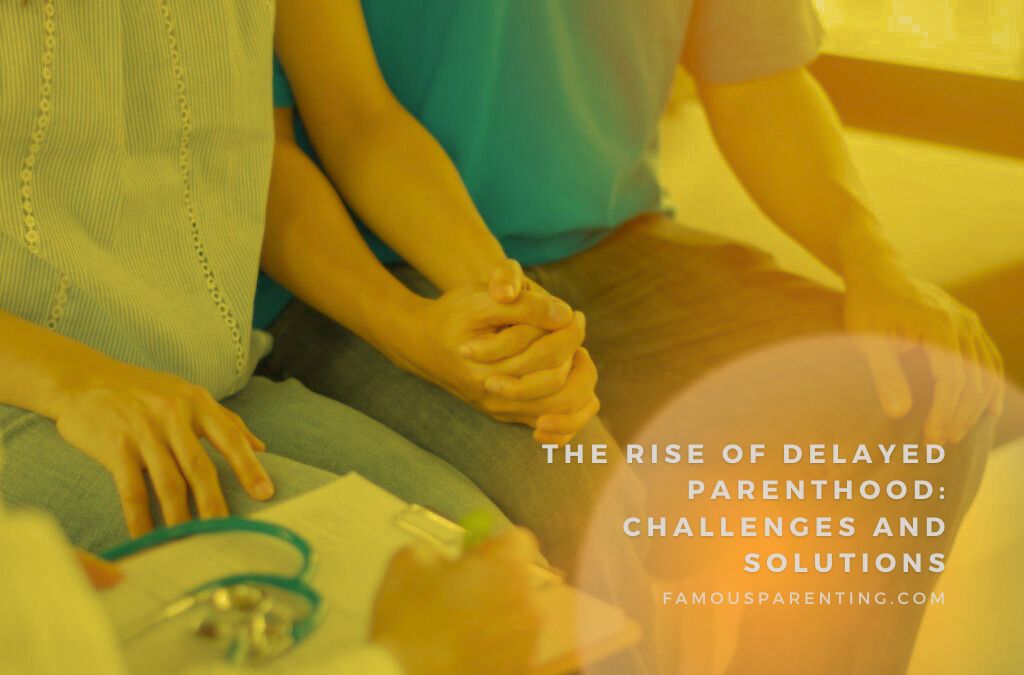The decision to become a parent is a significant milestone for many people. However, as society evolves, so do the perspectives and priorities of individuals, leading to a rise in the trend of delayed parenthood. More and more couples and individuals are choosing to wait until their 30s, 40s, or even later before they start building a family. This shift in attitude has led to a number of challenges, including age-related infertility, increased risk of complications during pregnancy, and the pressure to balance career goals with family planning. Fortunately, there are solutions available for those who choose to delay parenthood.
I. Introduction
The decision to become a parent is a personal and life-changing one. However, many people are now choosing to delay parenthood until later in life. According to a report from the Centers for Disease Control and Prevention (CDC), the average age of first-time mothers in the United States has increased from 21.4 in 1970 to 26.9 in 2020. The trend of delayed parenthood is not limited to women, as more and more men are also choosing to delay fatherhood. This article will explore the challenges of delayed parenthood and the solutions available for those who choose to wait.
II. Challenges Of Delayed Parenthood
One of the most significant challenges of delayed parenthood is age-related infertility. As women age, their fertility declines, making it more difficult to conceive naturally. For women over 35, the chance of conceiving naturally is significantly reduced. Additionally, there is an increased risk of complications during pregnancy, such as gestational diabetes, hypertension, and pre-eclampsia.
Another challenge is the pressure to balance career goals with family planning.
Many people who delay parenthood do so to focus on their education and careers.
However, as they enter their thirties and forties, they may start to feel the pressure to start a family while still pursuing their professional goals. Let’s understand them in detail:

A. Delayed Parenthood Can Cause Age-Related Infertility
One of the primary challenges of delayed parenthood is the increased risk of age-related infertility. As women age, their reproductive systems undergo changes that can make it more difficult to conceive. According to the American Society for Reproductive Medicine (ASRM), a woman’s fertility begins to decline significantly in her late 20s and early 30s, with a steep drop after age 35. In addition, the quality of a woman’s eggs decreases as she ages, leading to a higher risk of chromosomal abnormalities and miscarriage.
B. Increased Risk Of Complications During Pregnancy
Delayed parenthood can also lead to an increased risk of complications during pregnancy. Women who become pregnant later in life are more likely to experience high blood pressure, gestational diabetes, and other medical conditions. In addition, the risk of miscarriage and stillbirth increases as a woman ages.
C. Pressure To Balance Career Goals With Family Planning
Many individuals and couples who choose to delay parenthood do so because they are focused on their careers. However, this can lead to a great deal of pressure to balance career goals with family planning. It can be challenging to find the right time to start a family while also pursuing career ambitions. This can lead to feelings of stress and anxiety, as well as uncertainty about the future.
III. Solutions For Delayed Parenthood
Fortunately, there are several solutions available for those who choose delayed parenthood. Some of the most popular solutions include egg freezing, in vitro fertilization (IVF), adoption, and planning and communication.
NewGen Families explains family planning is now possible for couples with gynecological and fertility problems, as well as LGBTQI+ individuals who want to have children. Dedicated agencies and organizations offer comprehensive support from the beginning of their journey until they hold their baby in their arms. They can introduce these aspiring parents to clinical psychologists and prepare them emotionally for every step of their egg donation, IVF, and surrogacy journey.

A. Egg Freezing Solution For Delayed Parenthood
Egg freezing is a popular option for women who want to delay parenthood. The process involves extracting a woman’s eggs and freezing them for future use. This allows women to preserve their fertility and increase their chances of conceiving later in life. According to the ASRM, the success rates of egg freezing depend on a variety of factors, including a woman’s age at the time of freezing. The cost of egg freezing can also vary, but it is generally considered an investment in future fertility.
B. In Vitro Fertilization (IVF)
IVF is another option for those who want to delay parenthood. This process involves fertilizing a woman’s eggs with sperm in a laboratory and then transferring the resulting embryo(s) to the woman’s uterus. IVF can be especially helpful for women with age-related infertility or those who have difficulty conceiving for other reasons. The success rates of IVF also depend on a variety of factors, including age and the quality of the sperm and eggs used. Before considering IVF as an option you should study ivf process from start to finish.
C. Adoption
For individuals or couples who are unable to conceive, adoption is an option for building a family. Adoption can provide a loving home for a child in need and can be a rewarding experience for parents. There are various types of adoption, including domestic and international adoptions, as well as adoption of foster children. The process can be complex and time-consuming, but there are resources available to help guide prospective parents through the process.
D. Planning And Communication
Perhaps the most important solution for delayed parenthood is planning and communication. It’s essential for individuals and couples to have open and honest conversations about their family planning goals, career aspirations, and personal values. This can help to alleviate the stress and uncertainty that often comes with delayed parenthood. Additionally, it’s crucial to plan for future fertility by discussing options like egg freezing or IVF with a healthcare provider.

IV. Conclusion
Delayed parenthood is becoming increasingly common, but it can also present significant challenges. Age-related infertility, increased risk of complications during pregnancy, and the pressure to balance career goals with family planning are just a few of the obstacles that individuals and couples may face. However, there are solutions available, including egg freezing, IVF, adoption, and planning and communication. By exploring these options and making informed decisions, individuals and couples can successfully navigate the challenges of delayed parenthood and build the families they desire.
Our super author here at Famous Parenting and an absolute wealth of knowledge. She has studied many topics including creative writing, psychology and journalism but her real passion lies in raising her 3 children. Between working from home, homeschooling her youngest 2 children and navigating the world of teenagers she is a guru for parents.





